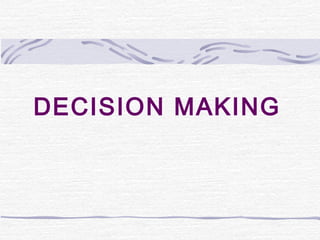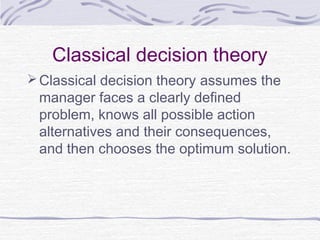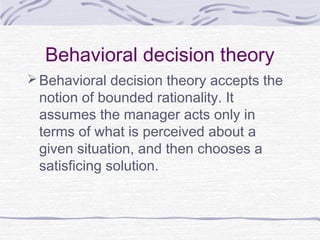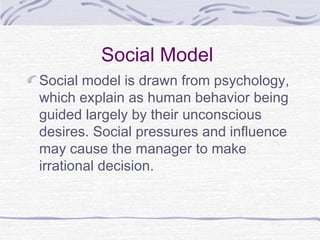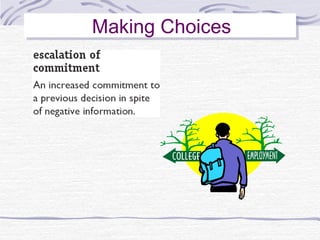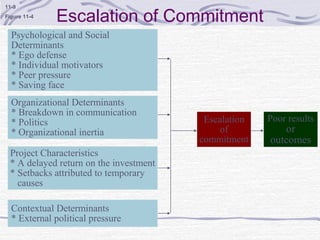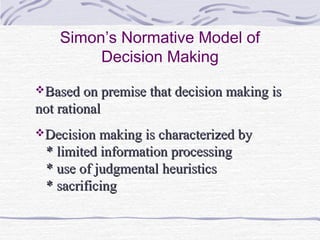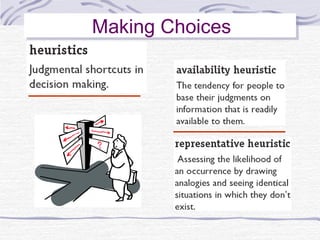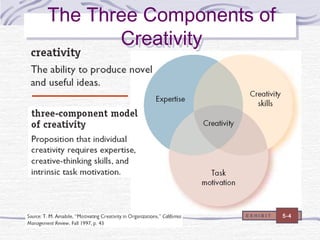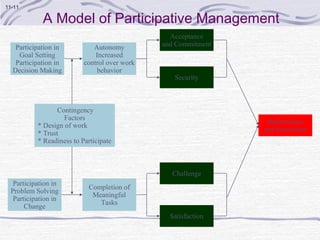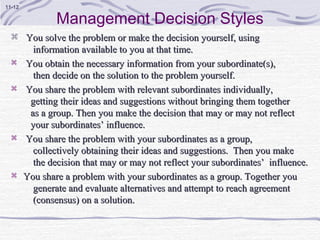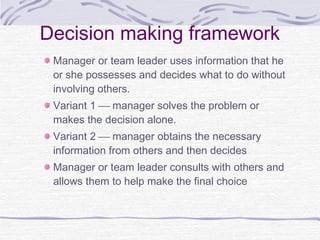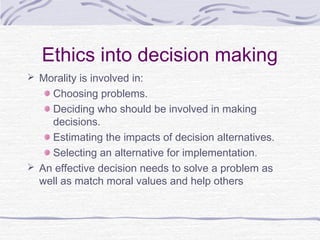The document discusses decision making processes and models. It covers:
1. Steps in systematic decision making including defining the problem, identifying alternatives, choosing a preferred course of action, and evaluating results.
2. Phases and stages of decision making processes including intelligence, design, choice activities, and identification, development, and selection phases.
3. Models of decision making including rational, behavioral, social, and Simon's normative models.
4. Techniques for group decision making and problem solving such as nominal group technique and Delphi technique.
